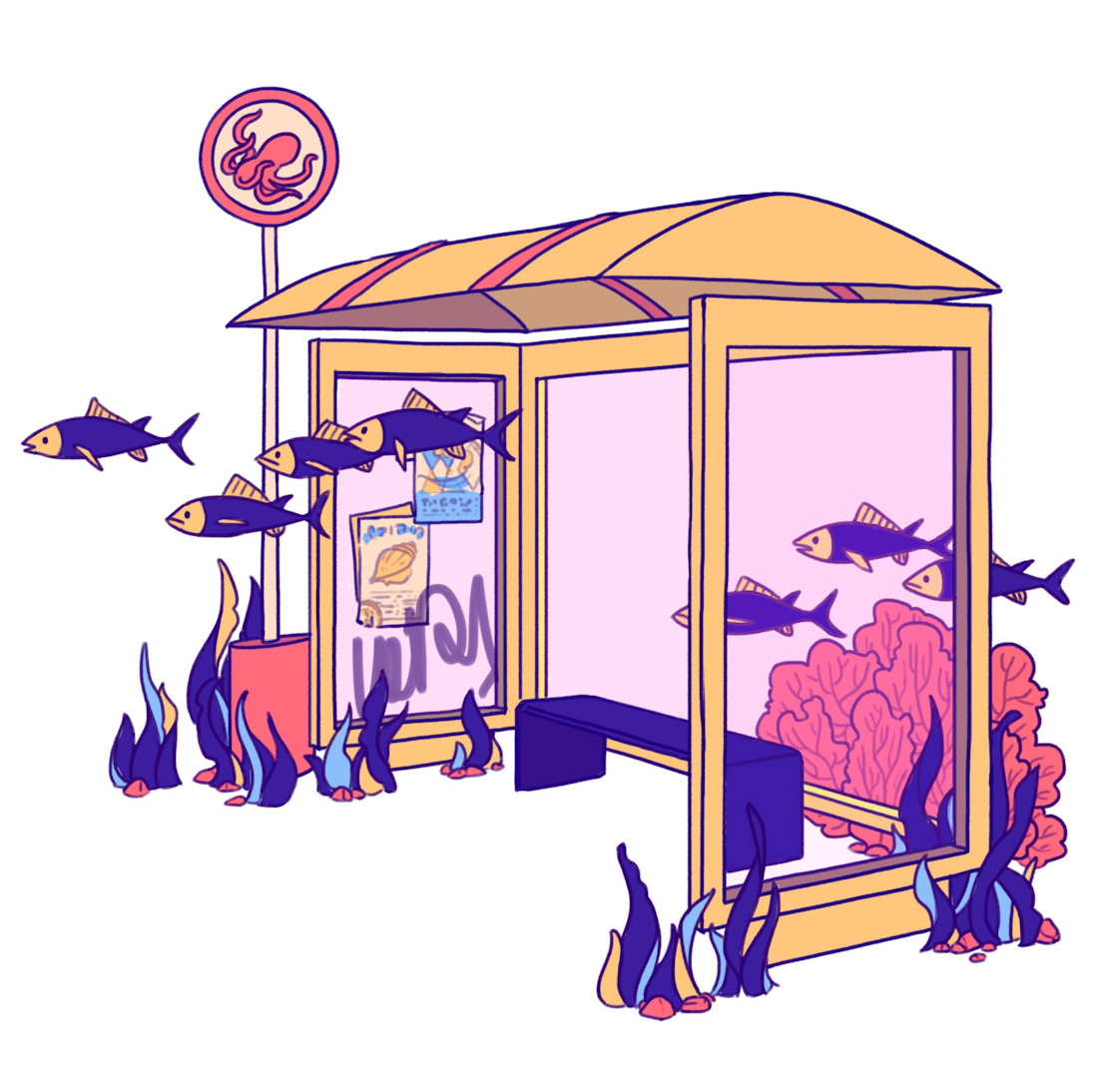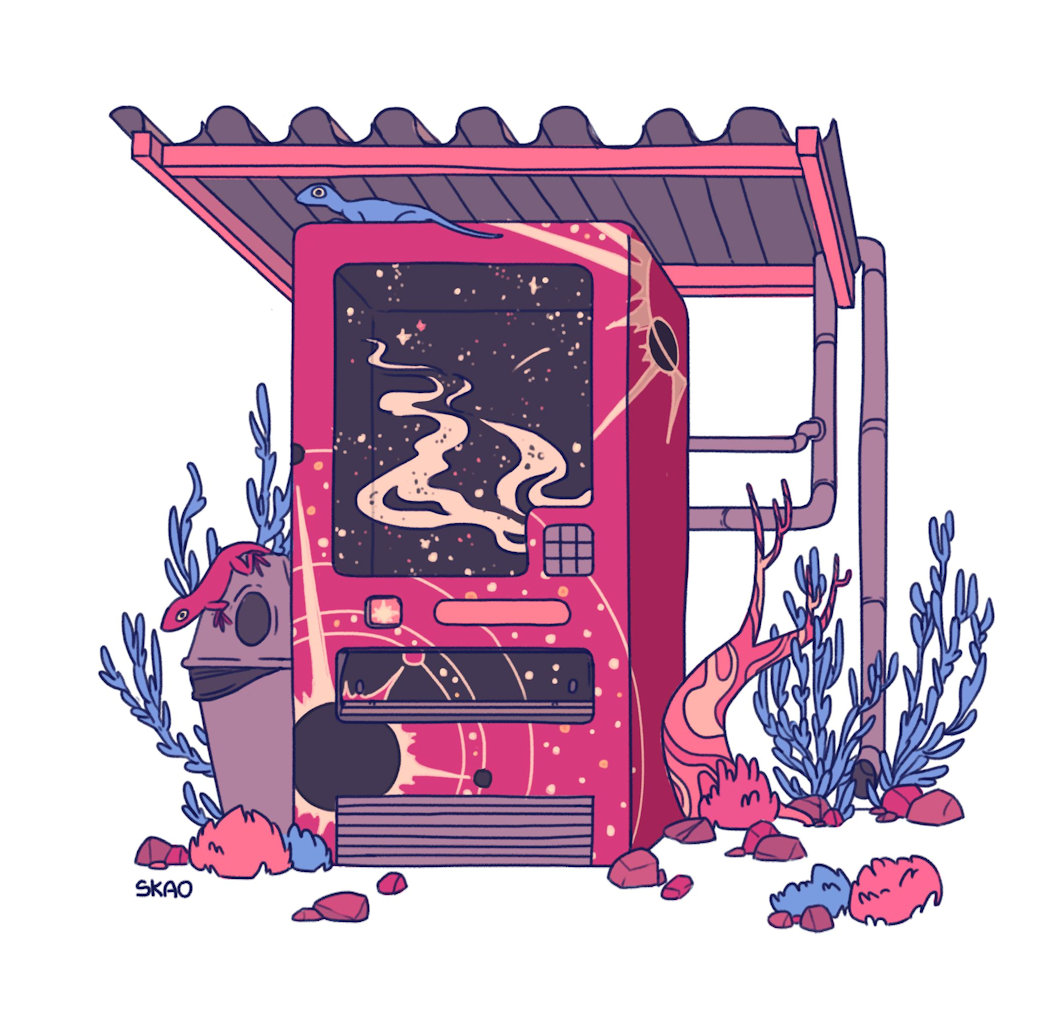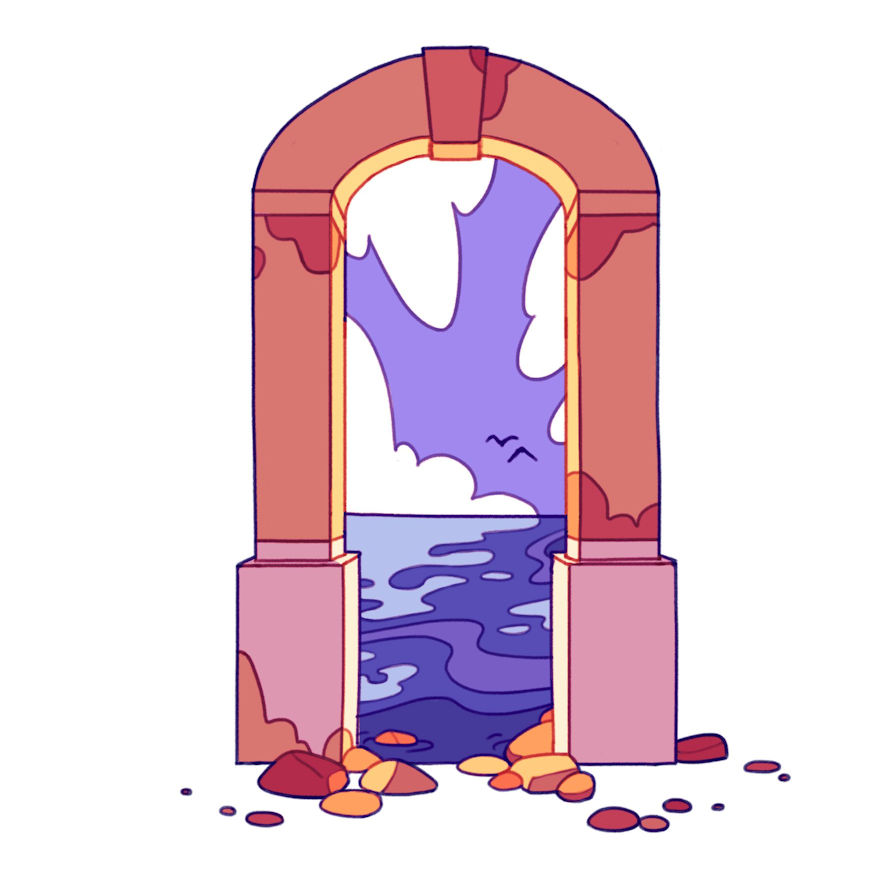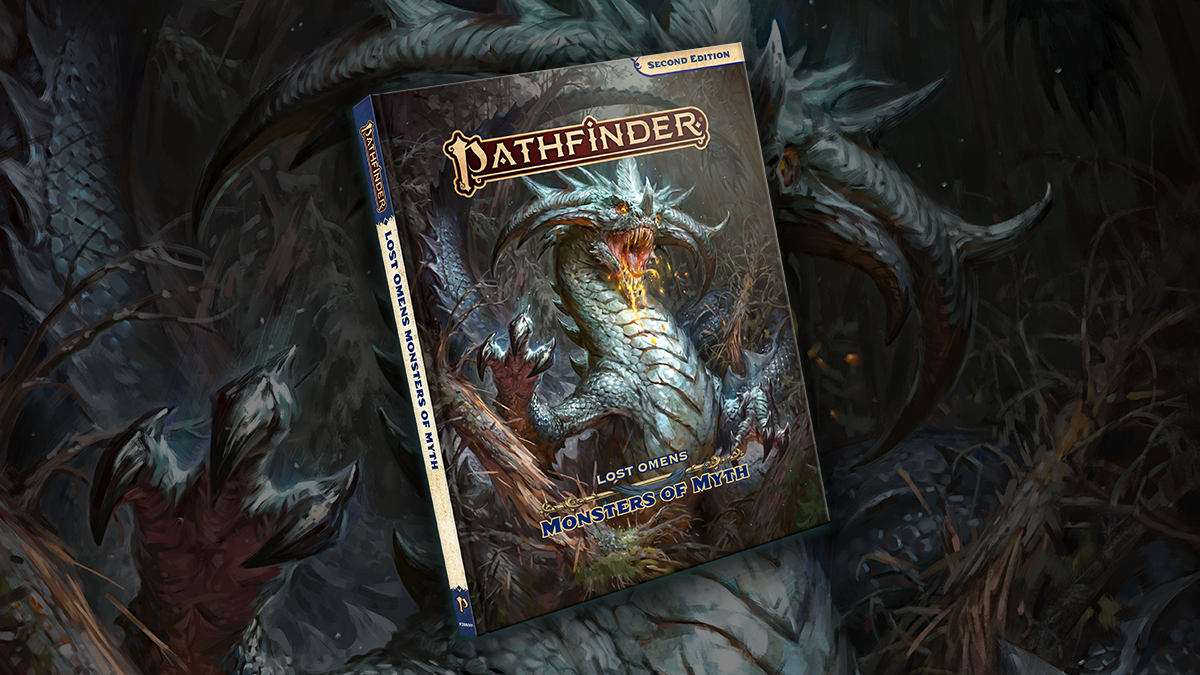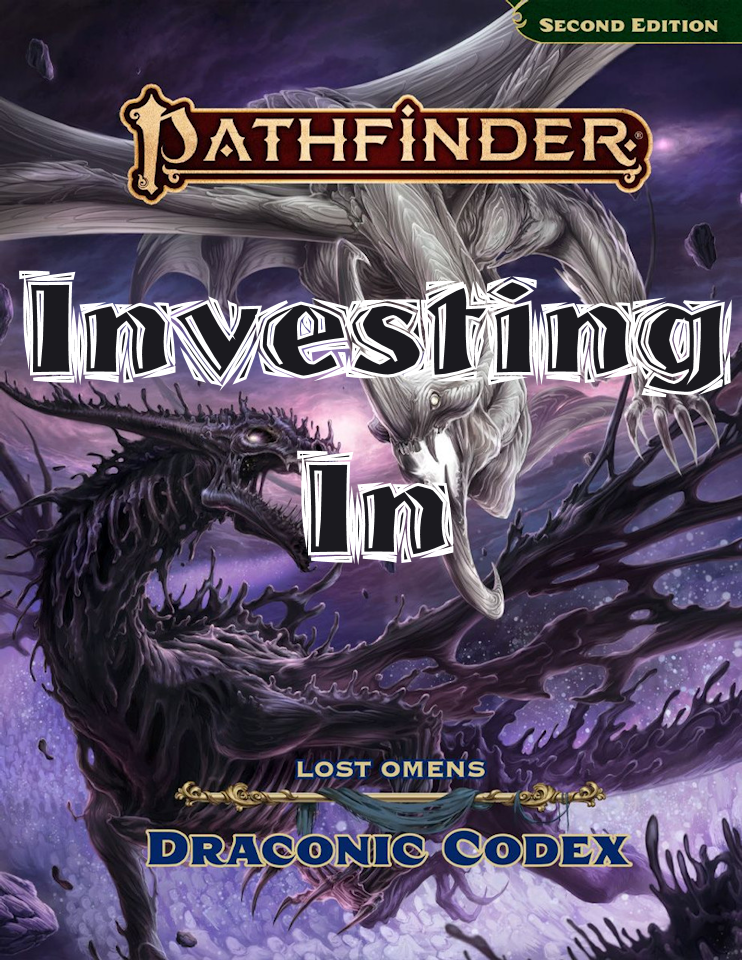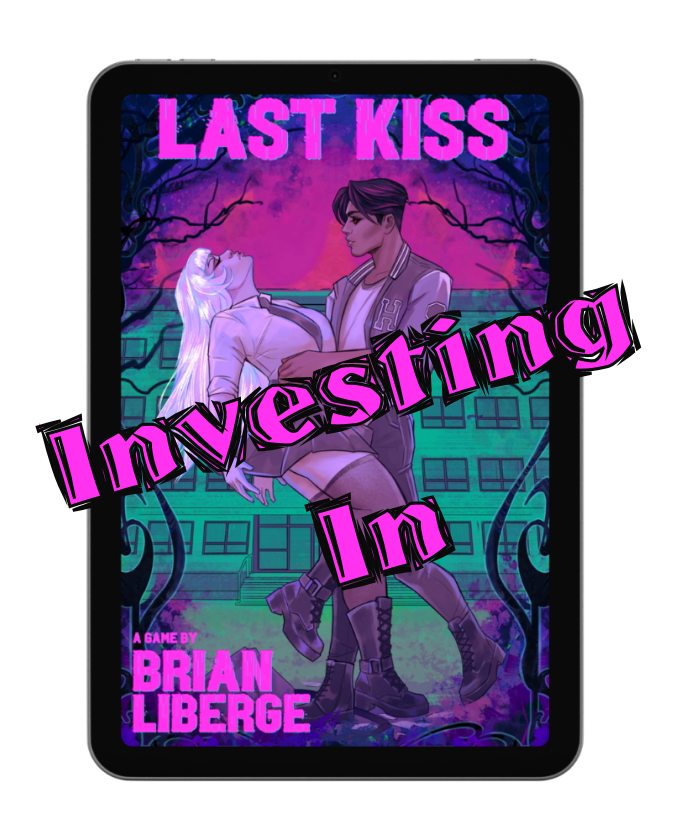Cephalophor was, by all accounts, an accident: a miscategorization that puffed itself city-sized out of spite. Its founders were con artists who stopped to fleece a small music festival, built a small but robust bureaucracy to automate the grift, and expanded the boundaries of their great little joke over the next forty years.1
Creating a city out of a grift at a music festival? That seems like magic to me, street magic even! i’m sorry did you say street magic? is a GM-less city-building game though that is really selling it short. And yes, no need to apologize. It really is magical as you craft your city streets, the place in between, and all the creatures that traverse down them whether they walk, ride, fly, or even swim! Created by Caro Asercion, i’m sorry did you street magic is for two to six players and takes only a few hours though you can certainly continue to explore your new town.
My friend Rich approached a few of us to try and I was eager to do so as I said last article about PAX Unplugged and looking ahead into 2022, I was looking for GM-less games. My friend Mike joined us and we played over Discord rather than try to get together due to the Omicron variant, cold and flu season etc. We actually plan to get together again to flesh out a bit more of the city. We actually haven’t even named ours yet, but I’m getting ahead of myself. First, let’s get into some street magic of our own!
The game wisely goes into safety tools for all players in order to support them. I appreciated the simile that while the games meant to be light and breezy, sometimes like exploring a city you might stumble upon something unexpected or strange. The game suggests the classic lines and veils, but also two other mechanics. Rest stops are for everyone to take a few minutes away from the table to catch their breath, stretch it out, refresh and refuel with a snack. Might also – if together – give you a chance to reflect on the game thus far. There’s also Holds, which are meant to be moments you signal for whether digitally or aloud, perhaps even a signal physically like patting your chest. You use Holds to ask clarifying questions for concerns you have or check in around heavy moments whether before, during, or after. I might suggest a Hold after game just to help reflect on the game and unwind, cool down from what you might be feeling. Character bleed can be quite real!
The Basis of a Good City is…
To begin, you choose three adjectives to set the mood and tone of the city. The guidebook gives examples as well as literal guidance of how to explain to anyone new to the game what the purpose is. Rich read out the guidance to my friend and I. It was mostly a framing device though we talked a bit of what we might be imagining and it was exciting to see how quickly we three were thinking similarly. It may be we’ve played so many games together, but also we’ve known each other a long time. Mike suggested something new and different for example: an underwater city. That’s not something we normally have in our games. Our adjectives became fallen, layered, and spectral for various reasons. We really wanted some words that had multiple meanings.
The game then suggests Laying a Foundation to get you going. Maybe those first few conversations have gotten a couple ideas you want to put to paper or out for the others to share in, grow upon. These activities are going to be used in the actual play of the game as you explore and meet others, but it’s suggested to make a Neighborhood and a Landmark. We each took a turn making one or the other.
Neighborhoods are specifically broad, overarching types of areas to help built up your town or city. They have at title, which is what the residents – or visitors – call the area. It also has a reputation. Here you describe the look, feel, or vibe of the neighborhood in a few sentences. Last but not least is the true name. Some of us might here that and think one or two magical words of power, but it’s far more than that. You’re encouraged – the person whose turn it is – to come up with two or three descriptive, sensory sentences that really depict the neighborhood and help you envision it in your mind’s eye. You might only have one or two thoughts and the others will help you build upon it. It’s a collaborative game after all! You’re intended to write these details on postcards but we used a google doc as we went along.
I chose to build a Landmark. Technically, landmarks are within a neighborhood and we’ll certainly determine that in time, but I had this clear idea of a smaller place in an area I wanted to set up. Like Neighborhoods, landmarks have titles and true names. However, instead of a reputation they have an address. It could be an actual address but the game suggests more abstract addresses like the heart of the neighborhood, just off the beaten path, or maybe you could do that dark alleyway. For our underwater city I envisioned a landmark titled the Swaying Fields, a cemetery of sorts in the eerie silence but swaying seaweed of the ocean floor. Check it out below:
Landmark: The Swaying Fields
- Address: where the city meets the ocean floor
- True name: cultivated black and blue-green seaweed rows, buoys of coral the size of a head tied floating, the fallen respected and wealthy rest forever in the buoys, all welcome few willing to visit
- The cemetery for the honored, respected, well-to-do with their remains immortalized in the buoys of a seaweed garden. A guild is in charge of their maintenance: the Gardeners
Fun right? My friends created the highest neighborhood of our tall town where trade happened amongst the elite, the merchants of airway Tethers for those visiting as well as a Crystal Palace that constantly requires upkeep by artisans and attendants. We were quickly realizing how fun it would be to play a game in this city and started talking how much it seemed to fit with the Cypher System from Monte Cook. It also made me think of the FATE system for Dresden as well as your table builds Aspects for locations, people, etc.
A Compass to Point the Way
Following that Foundation, you begin rounds of play where someone Declares a Compass, which is some theme or subject they want to explore, and then everyone takes a turn to Wander the City while adding a Neighborhood, Landmark, or Resident to the mix. Residents have titles, which is a common name other use, but maybe not their real name. Be sure to include their pronouns when declaring their title. You then add a bit of description for the resident like a profession or past time. Finally they also have a true name but this true name is established through a roleplaying vignette, some short scene where we see the resident’s daily life. Everyone participates collaboratively with the current player choosing where the scene takes place. Others give details or player other characters (possible residents you’ll define later!) in order to help frame up that resident. Other players may even play aspects of your town, neighborhood, etc. to express the weather, local sensory elements like music or smells, or even plants or animals the resident interacts with. We only made one Resident thus far: Ever Goron who maintains the monuments in the Swaying Fields. They may see many things, many denizens exchanging information or goods in the Fields but they only interfere if someone disturbs the monuments!
Everyone gets to Wander and then an event occurs! This is created by whomever started the round by declaring the Compass. The event should be related to that theme or mood and specifically tied to a specific neighborhood, landmark, or resident. The event may only be a sentence or two but you use it to frame what the event is. Everyone will then play a Voice of the City, asking questions of the event, stating an option various community members might have, or declaring a consequence due to what happened, whether affecting a specific resident or the town at a larger scale. This could even have long term changes to the city! We haven’t started an event yet, but I expect to during our follow up to i’m sorry did you say street magic? next week!
I’m really interested to finish up and to explore more of our city. I also feel this could be useful for world building on a collaborative scale whether for a new campaign or maybe for a game of pretty much any system. It won’t give you what stats to roll, but can certainly help you as a player or the GM get an idea of what sort of things could be fun in the location or the resident’s talents, motivations, let alone the look and feel of various areas! If you enjoy GM-less games and want to go exploring a new place, I highly suggest you Invest In i’m sorry did you say street magic?
Investing In:
I wasn’t quite sure what to name my article series when I first started but the idea of showcasing or discussing things that make me excited, that I find new and interesting, or maybe I’m otherwise passionate about seemed to fit with the idea of Investing In something like the Pathfinder 2E mechanic. To use some magic items you have to give that little bit of yourself, which helps make these things even better. I like the metaphor of the community growing and being strengthened in the same way!
I also want to hear what you’re Investing In! Leave me a comment below about what games, modules, systems, products, people, live streams, etc you enjoy! You can also hit me up on social media as silentinfinity. I want to hear what excites you and what you’re passionate about. There’s so much wonderful content, people, groups (I could go on) in this community of ours that the more we invest in and share, the better it becomes!
Sources
Banner – I’m Sorry Did You Say Street Magic? cover, game by Caro Asercion, art by Shannon Kao
- Cephalophor excerpt, Easy Streets supplement, Caro Asercion
- playing the game banner image, I’m Sorry Did You Say Street Magic?, Shannon Kao
- visiting a landmark image, I’m Sorry Did You Say Street Magic?, Shannon Kao
- attribution and thanks image, I’m Sorry Did You Say Street Magic?, Shannon Kao


